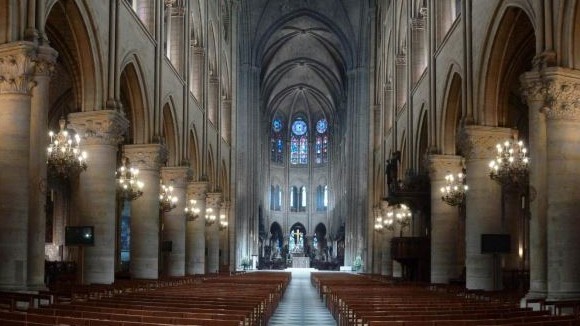

In response to the previous post—specifically, to fusty reactions to Roman Cieslewicz’ poster image Article with Roman Cieslewicz’s poster — a priest friend writes:
I, for my part, am simply too jaded to be offended. I noted, of course, the strength—the shock—of the image in question. That’s the point of the various memento mori, after all. And in our time—much more than for those medieval and later artists—the linking of sex with death has become poignant. We deal with things of which they could not have conceived.
And precisely because so many people have become complacent with what not long ago would have been considered monstrous, it is sometimes necessary to shock them. That is why Flannery O’Connor, as she herself explained, had such grotesquerie in her stories. She faced the same problem—people missing the point. And, as I have pointed out in more than one homily: Christians have a great knack for missing the point of the most grotesque act of desecration in history: the Crucifixion. Their precious bourgeois sensibilities . . . reduce it to a decoration, leading them to miss even its soteriological import.
(…)
Just so, Father. In terms of complacency before the monstrous, just so. A bit less certain, though, about the word bourgeois. These days, that old epithet applies to everyone from Uber drivers to academics—including theologians. But we can chew on that in another email.
The letter struck several chords. First among them is the contribution to that complacency by disciples of the Beautiful. The crucifixion was not depicted in the primitive Church. It was several centuries in the making. An object of commemoration and veneration, it arrived necessarily as a work of art. It entered art history carrying aesthetic attitudes with it. Seeds of aestheticism were there from the beginning. Guigo, a 4th century Carthusian prior-general, understood. He deemed aesthetic enthusiasms to be psychologically harmful: “. . . those beauties and worldly graces quickly enervate the man and render the masculine heart effeminate.”
That quote comes to me whenever I look at a crucifixion or a flagellation by Fra Angelico. Luminous and serene, something feminine—a comeliness, a delicacy—resides in these frescoes. Guido di Pietro, reverent friar that he was, painted for his confreres in the Convento di San Marco. Not a bourgeois among them—certainly not Savonarola, whose tiny cell was enriched with the Angelic Brother’s work.


Raphael’s Crucifixion is stylized, highly decorative, and more compelling as an ornament than an evocation of salvation history. I dislike it:

Later Renaissance crucifixions, more muscular than these, aestheticize the crucifixion differently. Jesus appears on the cross in perfect conformity to reigning canons of male beauty. Look at the corpus in many of the great depositions and what do you see? The composition is obliged to carry the meaning of the scene while the corpus itself remains untorn and largely unbloodied.
In his stunning 3-panel Elevation of the Cross, Ruben’s attention was on the demands of Baroque design before anything else. The Christ figure, bearing only a discreet trickle of blood from the wrists, shares with the executioners a perfection of masculine form that overrides the realities of torture. The grotesque is veiled by a lustrous body that bespeaks classical nobility.

The single crucifixion scene capable of moving me toward a grasp of what God has done for man has always been Matthias Grünewald’s Isenheim Altarpiece. Canons of beauty were never the object here. The corpus is appalling; it repels aestheticization. Christ does not appear to transcend the agony of his ordeal. He has, indeed, “descended into hell.” No hint of ultimate tranquility shields us from suffering the sight of a body broken by torment. Even the loincloth is torn. The crossbeam bends under the dead weight of its burden. Here is the West’s most harrowing image of the Crucifixion, one that that makes vivid the agony of redemption, the scandal of the Cross.

Grünewald’s painting was not made for princes of the Church or court. It was made for the wretched sufferers of St. Anthony’s Fire, a debilitating fungal disease common in Western Europe through the Middle Ages and beyond. The Isenheim Altarpiecechallenged—without intending to—the primacy of the classical tradition in treating religious themes.
To reacquaint ourselves with the monstrous cruelty of crucifixion, perhaps we should take our eyes away from art for a time. Turn them on the works—deathworks—of a culture that still practices crucifixion. Look to contemporary Syria and Nigeria to witness the depths hidden in that lovely phrase Suffering Servant.

.
Maureen Mullarkey
..


